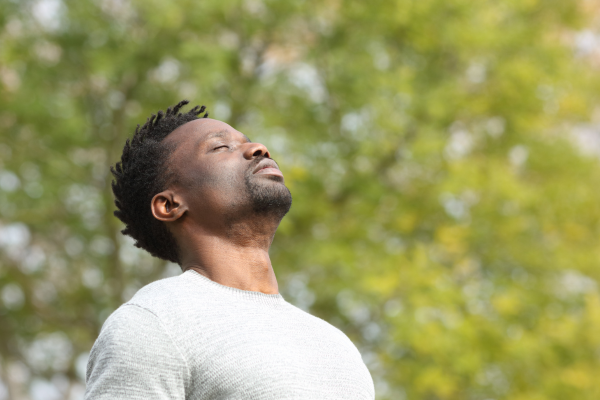The right kind of heat, applied at the right time, can be a simple, comfortable way to improve your athletic performance, speed up recovery, and boost your endurance.
Audio Version“Prefer listening over reading? Dive into our blog’s audio version! Perfect for when you want to let your eyes recover as well as your body. Give it a try!
If you do a tough workout, chances are something is going to feel stiff or sore afterwards.
This is a natural reaction to hard work. It’s your body’s way of saying “wait up a sec, I’m in healing mode right now”.
But recovering and healing takes time, so we’re always on the lookout for a recovery shortcut.
Ice baths have been the go-to recovery/torture method for a while now.
But if the thought of an ice bath leaves you feeling, well, cold, we’ve got some good news: when it comes to recovery, heat has some amazing benefits. And given the choice between the two, heat gets my vote every time!
Read on to find out why, or explore our series on tools you need to help with athletic recovery.

What is Heat Treatment in Sport?
Heat treatment, or heat therapy, can promote muscle relaxation, increase blood flow, and aid recovery. Applying heat to the body using methods like hot packs, warm baths, saunas, or heating devices not only makes sore muscles and stiff joints feel better, it can boost performance and speed up recovery too.
Types of Heat Treatment
- Dry Heat: This includes saunas, heating pads, and heat lamps. Dry heat is often used when athletes want to quickly warm up before training or competition, as it raises the body’s temperature and loosens muscles.
- Moist Heat: Methods like hot baths, steam rooms, or heated towels fall into this category. Moist heat penetrates muscles more deeply than dry heat, making it ideal for post-workout recovery or when dealing with muscle tightness.
- Whole-Body Heat Therapy: Saunas and hot baths are examples of heat treatments that target the entire body, increasing circulation and promoting overall relaxation.
- Localized Heat Therapy: This targets specific muscles or joints with hot packs or heating pads to relieve pain or stiffness in problem areas. Applying heat directly to a specific body part gives you the benefits with minimal or no changes in body core temperature.
How Does Heat Affect Athletic Recovery?
When heat is applied to muscles, it dilates blood vessels, increasing blood flow and delivering more oxygen and nutrients to the tissues (if you’ve been following us for a while, yes, that’s the vasodilation effect provided by the blackcurrant powder - same effect, just a different pathway).
This helps relax muscles, loosen up tight joints, and speed up recovery after a hard training session or event.
In other words, that muscle pain and stiffness that you get a day or two after pushing your body won’t be as bad and won’t stick around for as long.
Heat can also be used as part of a warm up - it stimulates the nervous system, reducing the perception of pain and allowing athletes to push through soreness more comfortably.
Improved Blood Circulation
One of the main benefits of heat therapy is its ability to increase blood flow. When heat is applied to muscles, blood vessels dilate (widen), allowing for better circulation. This means more oxygen and essential nutrients reach your muscles, speeding up the repair process and flushing out waste products like lactic acid that can build up after intense workouts.
Think of it as a faster delivery system for the resources your body needs to repair and rebuild muscle tissue after exercise.
Reduction of Muscle Soreness (DOMS)
Delayed-onset muscle soreness (DOMS) is the familiar discomfort you often feel 24 to 48 hours after a hard workout. Heat therapy helps ease this soreness by reducing muscle tension and improving circulation to the affected areas.[1]
Unlike cold therapy, which is great for reducing acute inflammation, heat works best when used after the initial swelling has gone down. Heat applied just after exercise seems very effective in reducing muscle soreness. Unlike cold, it increases flexibility of tissue and tissue blood flow. For joints, it is still probably better to use cold to reduce swelling.[2]
By loosening up tight muscles and increasing blood flow, heat can help alleviate stiffness and soreness, allowing you to bounce back quicker.
Relaxation and Pain Relief
After a tough training session, muscles can become tight and painful. Heat therapy helps soothe those aches by relaxing tense muscles and reducing cramps. This is especially helpful for athletes who deal with chronic muscle tightness or stiffness from repetitive activities.
By calming the nervous system and easing tension, heat therapy can act as a natural pain reliever, making it easier for athletes to recover without relying on medication.
Stress ReductionAthletes often experience mental and physical stress after competitions or intense training. Heat therapy can help reduce this stress by promoting relaxation. Whether through a sauna session or a warm bath, the soothing effects of heat extend beyond the muscles, helping to lower stress hormones like cortisol and leaving athletes feeling more mentally balanced. This reduction in stress not only aids physical recovery but also contributes to overall well-being, making it easier to stay focused and motivated for the next workout.
Practical Tip: Heat therapy doesn’t have to be complicated (or expensive). After a tough workout, try soaking in a warm bath for 20 minutes or applying a heating pad or hot water bottle to sore muscles. Combine this with stretching to further promote muscle relaxation and flexibility.

Enhancing Endurance and Performance
Applying heat before training or competition can help warm up muscles and increase flexibility, reducing the risk of injury and enhancing performance. Heat therapy, such as using a sauna or a hot shower, raises body temperature and prepares muscles for physical exertion, allowing athletes to perform at their best. Additionally, heat acclimatization—training in hot conditions—can improve endurance, helping athletes adapt to competing in warmer environments.
- Practical Tip: Spend 10-15 minutes in a sauna or take a warm shower before training to loosen up your muscles and increase flexibility. This helps prepare your body for intense exercise, reducing the risk of injury and improving your overall performance.
Boosting Metabolism and Energy
Heat therapy can also give a temporary boost to metabolism and energy levels. Exposure to heat increases heart rate and oxygen consumption, similar to what happens during light exercise. This boost in metabolic activity can help athletes feel more energized and ready to perform. It’s a great way to get a natural lift in energy before a workout or competition, without relying on stimulants.
- Practical Tip: To give yourself an energy boost before a workout, spend 5-10 minutes in a warm environment—like a hot tub, sauna, or even under a heating pad. This slight increase in body temperature and heart rate can help get you in the zone and elevate your performance.
Muscle Relaxation for Flexibility
Heat therapy is excellent for increasing muscle pliability and flexibility. Warm muscles are more elastic, reducing the chance of injury during high-intensity activities.
Whether it's before a workout or as part of your post-exercise routine, using heat can help improve your range of motion, making your muscles and joints more fluid and less prone to stiffness. This is particularly useful for athletes who rely heavily on flexibility, such as runners, swimmers, and gymnasts.
Practical Tip: Incorporate heat therapy into your stretching routine by applying a heating pad or hot water bottle to tight muscles for 10 minutes before stretching. This will make your muscles more flexible and help you get the most out of your stretches.
Improved Recovery Between Sessions
For athletes who train frequently, quick recovery between sessions is crucial. Heat therapy helps speed up recovery by increasing blood flow to tired muscles, reducing soreness, and promoting muscle relaxation. By enhancing circulation, heat helps to flush out waste products like lactic acid that can build up after workouts. Regular use of heat therapy can make it easier to recover faster, so you’re ready to perform again in less time.
Practical Tip: After a hard workout or game, take a warm bath or use a heated compress on sore areas to promote recovery. Combine heat therapy with light stretching to further aid muscle recovery and improve flexibility for your next training session.
When Should You Not Use Heat Therapy?
While heat therapy can be incredibly beneficial for athletes, there are certain situations where it may do more harm than good. Knowing when to use heat—and when not to—is crucial to avoid worsening injuries or delaying recovery. In some cases, cold therapy may be a better option.
Avoid Heat for Acute Injuries or Swelling
Heat should not be applied to acute injuries, such as sprains, strains, or bruises, especially within the first 48 hours. When an injury is fresh, heat can increase inflammation and swelling by dilating blood vessels. In these cases, cold therapy (like ice packs) is the better choice because it constricts blood vessels, reducing swelling and numbing the area to relieve pain.
Avoid Heat if You Have Certain Medical Conditions
If you have cardiovascular conditions, heat therapy can increase heart rate and blood pressure, putting additional stress on the heart. Athletes with high blood pressure, heart conditions, or certain skin sensitivities should be cautious when using heat therapy and consult a medical professional before doing so.
Don’t Overuse Heat Therapy
Prolonged exposure to heat, such as sitting in a sauna for too long or using heating pads at high temperatures, can lead to dehydration, burns, or overheating. It’s important to follow recommended time limits (usually 15-20 minutes) and drink plenty of water when using heat therapy. Athletes training in the heat should ensure they’re well-hydrated and avoid heat therapy if they’re feeling dizzy or unwell.
Heat Therapy vs. Cold Therapy: When Do I Use It?
Basically, applying heat helps muscles relax, while applying cold reduces inflammation. Of course, it’s a lot more complicated than that; the table below gives some examples of when heat or cold might be the better choice for recovery (more on the benefits of cold therapy here).
The interesting thing is that whatever your choice, studies have shown that just applying anything - whether it's heat or cold - means you recover significantly better than applying neither after training.[3][4]
|
Condition |
Heat Therapy |
Cold Therapy |
|---|---|---|
|
Acute Injuries (first 48 hrs) |
Not recommended (increases swelling) |
Recommended (reduces swelling and pain) |
|
Chronic Muscle Pain |
Recommended (relaxes muscles and reduces stiffness) |
Not ideal (can stiffen muscles) |
|
Post-Workout Recovery |
Recommended (increases blood flow and speeds recovery) |
Can be used for immediate soreness reduction |
|
Muscle Soreness (DOMS) |
Recommended (reduces stiffness and aids flexibility) |
Recommended (can help reduce inflammation) |
|
Joint Pain (arthritis) |
Recommended (eases stiffness) |
Can be used to reduce swelling in inflamed joints |
|
Swelling and Inflammation |
Not recommended (can increase swelling) |
Recommended (reduces inflammation) |
|
Tight Muscles |
Recommended (relaxes and loosens muscles) |
Not ideal (cold can tighten muscles further) |

Practical Tip: If you’re unsure whether to use heat or cold therapy, a good rule of thumb is to use cold for immediate injuries or swelling and heat for muscle relaxation and recovery after the acute phase has passed. When in doubt, consult with a sports therapist or medical professional to avoid worsening an injury.
Conclusion
Heat therapy can help athletes enhance performance, speed up recovery, and improve overall endurance.
Whether it's warming up muscles before exercise, promoting faster recovery between training sessions, or simply reducing muscle soreness, heat can make a big difference in how your body responds to physical stress.
So if you're looking for a recovery shortcut, and don't have the willpower for an ice bath, give heat therapy a try.
References
- Kim K, Monroe JC, Gavin TP, Roseguini BT. Local Heat Therapy to Accelerate Recovery After Exercise-Induced Muscle Damage. Exerc Sport Sci Rev. 2020 Oct;48(4):163-169. doi: 10.1249/JES.0000000000000230. PMID: 32658042; PMCID: PMC7492448.
- Petrofsky J, Berk L, Bains G, Khowailed IA, Lee H, Laymon M. The Efficacy of Sustained Heat Treatment on Delayed-Onset Muscle Soreness. Clin J Sport Med. 2017 Jul;27(4):329-337. doi: 10.1097/JSM.0000000000000375. PMID: 27454218.
- Petrofsky JS, Khowailed IA, Lee H, Berk L, Bains GS, Akerkar S, Shah J, Al-Dabbak F, Laymon MS. Cold Vs. Heat After Exercise-Is There a Clear Winner for Muscle Soreness. J Strength Cond Res. 2015 Nov;29(11):3245-52. doi: 10.1519/JSC.0000000000001127. PMID: 26502272.
- Wang Y, Li S, Zhang Y, Chen Y, Yan F, Han L, Ma Y. Heat and cold therapy reduce pain in patients with delayed onset muscle soreness: A systematic review and meta-analysis of 32 randomized controlled trials. Phys Ther Sport. 2021 Mar;48:177-187. doi: 10.1016/j.ptsp.2021.01.004. Epub 2021 Jan 14. PMID: 33493991.
- Chaillou T, Treigyte V, Mosely S, Brazaitis M, Venckunas T, Cheng AJ. Functional Impact of Post-exercise Cooling and Heating on Recovery and Training Adaptations: Application to Resistance, Endurance, and Sprint Exercise. Sports Medicine - Open. Vol 8. 2022/03/07. 2198-9761. https://doi.org/10.1186/s40798-022-00428-9



